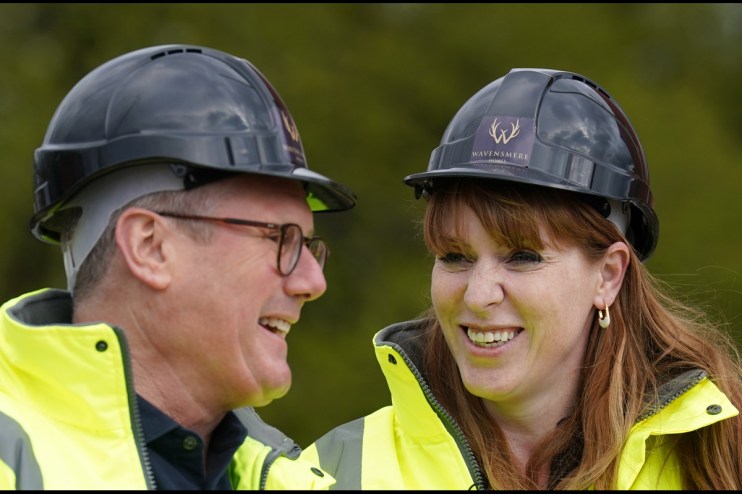
Labour have set out plans for a housebuilding drive on so-called ‘grey belt’ land in an effort to address the housing crisis.
Labour leader Sir Keir Starmer and deputy leader Angela Rayner unveiled the policy today on a visit to a housing estate in Derby.
It comes as the party continues to flesh out its policy offer, including a commitment to build 1.5m homes over the next Parliament, ahead of a general election expected later this year.
Starmer used last year’s party conference to promise to reform planning rules at speed, to “take on the blockers and back the dream of home ownership,” in a bid for economic growth.
The party detailed its five ‘golden rules’ under which it said it ‘grey belt’ – or poor quality green belt land, such as petrol stations – can be released for development.
These include: prioritising developing brownfield land over the green belt; building on low-quality ‘grey belt’ areas before nature-rich green belt land; and plans being required to include 50 per cent affordable housing delivery, at a minimum, when land is released.
Labour’s rules also include plans having to offer new local public services and infrastructure, such as school and nursery places, new health centres and GP appointments.
While the party says it will not build on genuine nature spots and that plans must include improving existing green spots, such as new woodlands, parks, play areas and accessibility.
The “housing emergency has left millions unable to plan their lives, start families, or build a future for themselves and their kids,” Starmer said.
“We’ll prioritise ugly, disused grey belt land, and set tough new conditions for release. Our golden rules will also ensure any grey belt development delivers affordable homes, new infrastructure and improved green spaces.”
He pledged “to back hard-working aspirational Brits, deliver the homes and local services communities deserve, all while protecting access to genuine green space”.
Rayner added: “Much of the green belt isn’t rolling hills, but poor-quality scrub land, mothballed on the outskirts of towns. This land should not be off limits while local people are kept off the housing ladder.”
She added: “When we build on the grey belt, our promise is that more houses means more schools, doctors and green spaces families can use.”
It comes after Tony Juniper, chairman of Natural England, previously called for green belt building to be part of the UK’s answer to the housing crisis.
Conservative Party chairman Richard Holden said: “Labour’s policy is to ignore the concerns and voices of local people. It is the same approach they took to ULEZ and why they will fail.
“Only Rishi Sunak and the Conservatives will respect local communities building the right homes in the right places which has delivered one million homes over this Parliament and sticking to the plan to reduce inflation and get mortgage rates down to help first-time buyers.”
Andrew Carter, chief executive of Centre for Cities, welcomed the proposals as a “priority”.
He said: “Britain has a major housebuilding backlog. Low housing supply in and around major cities is suffocating growth, squeezing disposable incomes and placing opportunities out of people’s reach.
“For the next government to be willing to build on the green belt will be a test of its seriousness about tackling the housing crisis.”
And he added: “Very little green belt release is needed to deliver homes for millions of people. To build between 1.7m and 2.1m new suburban homes a short walk away from train stations that are within commuting distance of five of the UK’s biggest cities, only two per cent of the green belt would be required. Releasing this land for development is a priority.”
Sam Richards, from pro-growth campaign group Britain Remade, said: “It is simply madness we cannot build the homes Britain desperately needs on former industrial land because the land is classed as green belt.
“These welcome proposals should be a down payment on further planning reforms. Labour must now set out how they will go further to reform a broken system that is holding back new sources of clean energy, new transport links, and building the homes Britain needs.”

